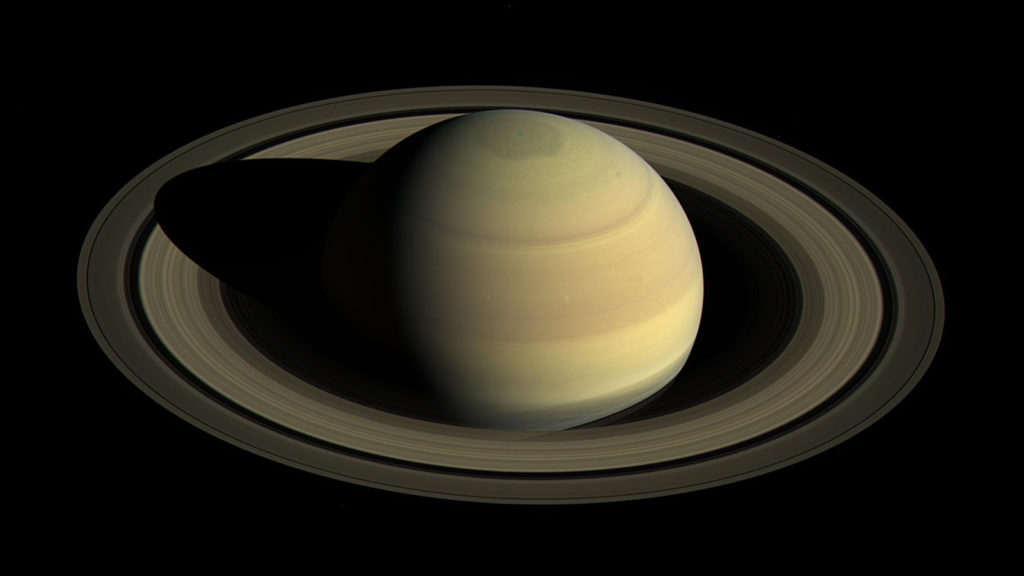
Saturn | NASA
From the Arizona Daily Sun, September 8, 2021
Saturn, one of the more familiar and alluring features of the night sky, is now well-positioned to wow observers. The farthest planet easily visible with the unaided eye, this jewel of the solar system has no problem showing off its bling, capturing the imagination of viewers young and old.
For centuries, Saturn has been referred to as the “ringed planet” because of the brilliant bands circling it. Jupiter, Uranus and Neptune, which with Saturn comprise the solar system’s four “gas giants,” also have rings, but their tenuous nature and dusty composition obscured their presence until the 1970s-80s.
The discovery of Saturn’s rings, on the other hand, dates back to 1610, when Galileo first observed and documented Saturn through a telescope. Using a crude, 1 ½ -inch-diameter instrument that magnified only about 20 times, he noted “to my very great amazement Saturn was seen by me to be not a single star, but three together, which almost touch each other. They are completely immobile and are situated in this manner, the one in the middle rather larger than the lateral ones.”
Galileo figured the two smaller bodies to be satellites orbiting Saturn, but when he revisited the planet through the telescope two years later, the “satellites” were gone. He concluded that the features he saw were some sort of arms. Not until the 1650s did Dutch astronomer Christian Huygens, using a much better telescope than Galileo’s and one that magnified 50 times, realize that the satellites were, in fact, a system of rings, and that the appearance of these rings changed regularly.
Spacecraft in the 20th century revealed that what astronomers thought of as a few major rings around Saturn are actually thousands of thin, tenuous ones. They collectively span 275,000 kilometers (170,000 miles) — which is 70% of the distance from Earth to the moon — but are less than ½ mile thick. While political satirist Mark Russell supported the hypothesis that the rings “are composed entirely of lost airline luggage,” astronomers know that water ice is the main ingredient.
Like Jupiter, Saturn has an equatorial bulge, meaning its width (diameter at the equator, which is about 120,000 kilometers (74,400 miles) is greater than its height (diameter at the poles, which is about 108,000 kilometers (67,000 miles). It is also unique in that its density is so low that it would float in water, if one could build a bathtub that big.
Due to intense heat created in Saturn’s interior, the planet radiates more energy into space than it receives from the sun, which is about 885 million miles away — more than nine times the distance from Earth to the sun. Because of this distance, sunlight that takes eight minutes to reach Earth needs another hour and 10 minutes to arrive at Saturn. Its greater distance from the sun also means that one Saturn year equals 29 ½ Earth years (nearly 11,000 Earth days).
Saturn is easily visible as a point of light to the unaided eye; a magnified view through a telescope will reveal its rings, atmospheric features, and several moons.